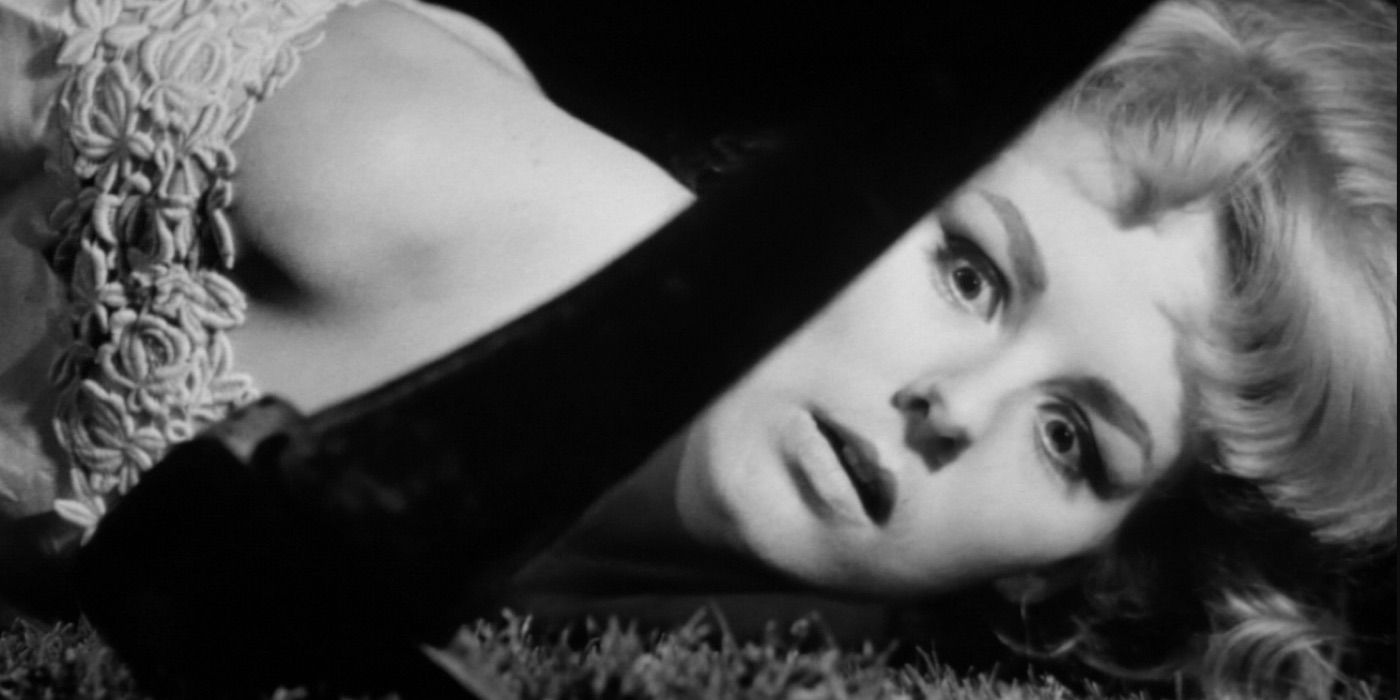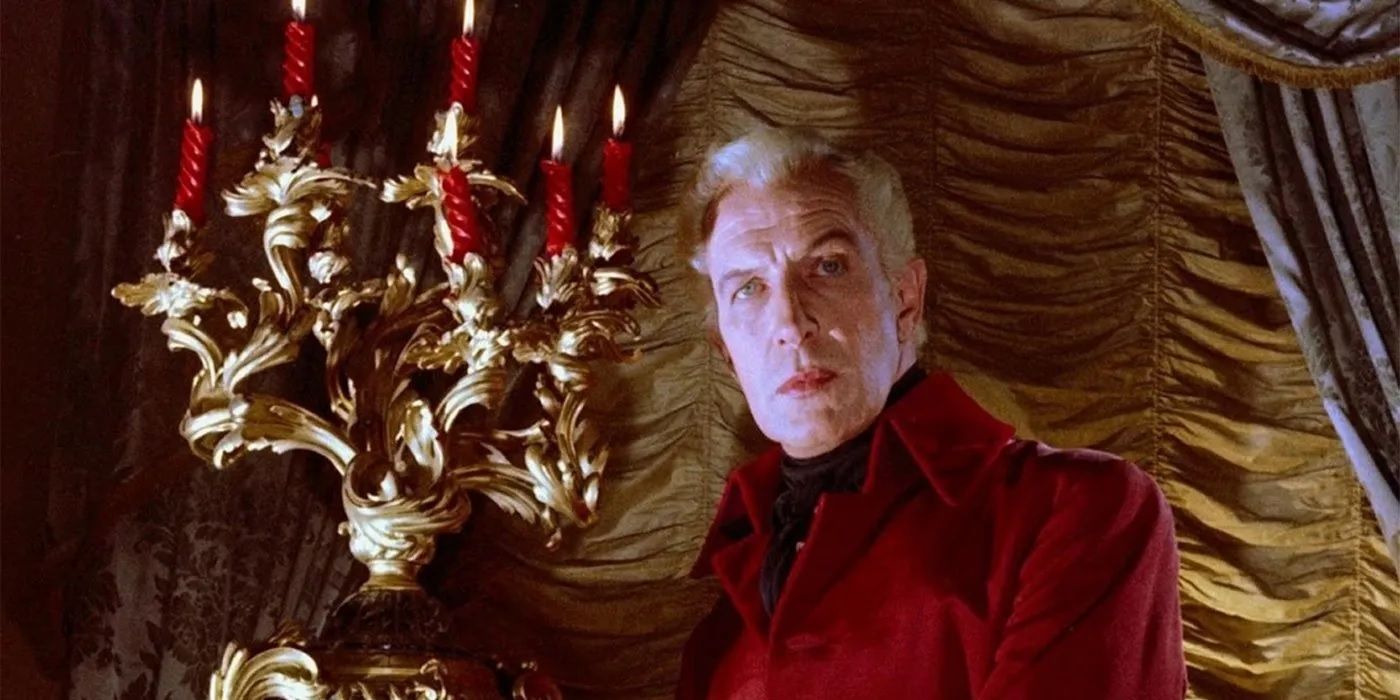The Big Picture
- Roger Corman’s Poe Cycle redefined horror cinema with Poe adaptations featuring gothic tones and human psychology exploration.
- Corman’s vision and interaction with Poe’s works made his films hauntingly eloquent, elevating them to auteur status in horror.
- Despite initial doubts, Corman’s experimental Poe adaptations, led by Vincent Price, became iconic contributions to horror history.
Famous for his B-grade horror films with exponential shock value and for giving countless stars their big break, the late great Roger Corman will forever be one of the most influential figures in horror cinema. From his well-renowned classic Little Shop of Horrors to his more attention-grabbing titles like Attack of the Crab Monsters, Corman produced an impressive and expansive resume of over 400 films throughout his career. After his passing, his daughter, Catherine Corman, made the heartfelt statement: “When asked how he would like to be remembered, he said, ‘I was a film-maker, just that’” (via The Guardian). And he will be; especially due to his experimental and captivating Poe Cycleof the early 1960s.
From 1960 to 1964, Corman directed eight films that were either adapted from or inspired by the literary works of Edgar Allan Poe. Many people, including American International Pictures (AIP), the production company he worked with, protested against this, urging him to stick with his classic low-budget, monster-driven, B-grade horror style, but Corman was passionate about his experimental idea. Kicking off the series with a haunting adaptation of House of Usher, Corman began fitting together the team and pattern that would continue down this path with him in the next films, and lead to the cycle’s success. Actor Vincent Price, screenwriters Richard Matheson and Charles Beaumont, and set designer Daniel Haller would become integral to the technicolor vibrancy and Gothic tones that pervade the series. But it was Corman’s vision for the cycle and the way he engaged with the source material thatmade these films some of the best Poe adaptations on the screen.
House of Usher (1960)
- Release Date
- July 20, 1960
- Cast
- Vincent Price , Mark Damon , Myrna Fahey , Harry Ellerbe , David Andar
- Runtime
- 79 Minutes
- Writers
- Edgar Allan Poe , Richard Matheson
What Is Roger Corman’s Poe Cycle?
Roger Corman’sPoe Cycle is a series of film adaptations of Poe’s works between 1960 and 1964, with seven of them being direct adaptations of a short story or poem, and one being inspired by a short story. In order of release, these include House of Usher (1960), The Pit and The Pendulum (1961), Premature Burial (1962), Tales of Terror (1962), The Raven (1963), The Haunted Palace (1963), The Masque of the Red Death (1964), and Tomb of Ligeia (1964). Price leads in seven of the films and both Matheson and Beaumont write three each, yet the only thread of continuity throughout the films is its Gothic roots and exploration of human psychology. Each film is framed slightly differently, with House of Usher leaning into gothic horror, Tales of Terror completely switching up the format as an anthology, and The Raven taking on a comedic twist in a gothic melodrama. Whilst keeping a consistent vision, Corman manages not to let any film become repetitive or stale, revitalizing the series with every installment.
In an interview for the documentary Edgar Allan Poe: Buried Alive, Corman revealed his inspiration and connection with Poe’s works. He particularly speaks about the Freudian themes inherent in Poe’s stories, from the long dark hallways of the dismal Usher house having connotations to the woman’s body and even the sort of incestuous nature of the relationship between Roderick (Price) and Madeline (Myrna Fahey). This type of psychoanalysis is applicable to each of the film adaptations, yet the power of Poe is his universal themes, which allows him to be studied in most high school English classes. Instead of making a series of low-budget, black-and-white horror flicks that often came out in double features, Corman opted for a more highbrow concept to push his work into the mainstream while breaking his mold.
Before Mike Flanagan, Vincent Price and Roger Corman Adapted Poe’s ‘House of Usher’
Poe’s works, and the writer himself, have been captivating the public eye for decades now, and with the success of the more recent materials like Netflix’s The Fall of the House of Usher and The Pale Blue Eye, he doesn’t seem to be petering out any time soon. What really sets Corman’s Poe adaptations apart is the circumstances surrounding them. According to The Lineup, while working with AIP, Corman was approached with another black-and-white B-grade horror but refused it in favor of thismore experimental idea that completely defied the career he had made so far. At this point, he was enamored with the idea of recreating Poe’s The Fall of the House of Usher, especially with it being budget-friendly as it was in the public domain. However, it was also fairly ambitious, considering the more lavish tones it would require, the competition from Technicolor Gothic films that were growing popular outside of Europe, and the fact that the brevity of Poe’s story meant they had to create entire acts to fit a feature-length film. Though he was given considerable pushback, he stuck with his guns and passionately rebuked any doubts.

A Roger Corman Horror Movie Gave Francis Ford Coppola His Directorial Debut
Francis Ford Coppola’s debut is an overlooked, chilly, eerie mystery.
One of the AIP executives, Samuel Z. Markoff, who is known for his remarkable one-liners, had incredulously responded with, “Where’s the monster?” Corman, who knew how to market ideas he was passionate about, promptly explained that the titular house was the monster, breathing, living, and haunting. (Via The Lineup.) After a $270,000 budget and a tight 15-day filming schedule, House of Usher raked in around $2 million when it was released. Corman’s instincts about it appealing to mainstream audiences due to the prevalence of Poe in schools was completely right. And in Markoff’s words, “if the teenagers were involved in something new, we made a movie about it” (via The Guardian). Despite the film’s financial success, House of Usher and its descendant’s place in history is Corman’s real win here. His fight to rebel against the expectations of what kind of movies he makes captures the essence of the horror genre. A lot of the iconic horror films that are inducted into the Hall of Fame were initially controversial, experimental, and, at times, low-budget. From Saw to The Blair Witch Project, or even The Human Centipede, the names earned their notoriety by being shocking and persevering. Corman’s House of Usher kicked off a cycle that would forever be embalmed and untouched in horror history.
Vincent Price and Other Players Helped Bring Corman’s Poe Cycle to Life
As Corman’s first color movie, he relied on his team to bring House of Usher to life, with moody gothic hues mixed with more vibrant, dazzling tones. Haller’s set design plays into this, as the decadence of the gold accents on the furniture contrasted hauntingly with the menacing, void-filled crack in the Usher house. The exuberant yet claustrophobic house feels like it was taken right out of Poe’s imagination and onto the screen. This high standard is kept throughout the rest of the cycle, from the regal architecture of The Masque of the Red Death to the rusty gears in the cavernous torture chamber in Pit and the Pendulum. These illustrious set designs complement each sequence seamlessly, enhancing the overall gothic mood and reviving Poe’s spirit.
More notably, Price’s contribution to the cycle by leading seven of the films is a testament to how powerful Corman’s vision was. Despite everyone’s initial reservations about the film, Price proved his dedication by bleaching his hair white-blonde for the film, accentuating the ghostly pallor of Roderick’s skin and the notion of him fading away. As a fairly antagonistic character, Roderick is very quickly painted in a negative light, but Price’s performance gives him a sense of brokenness from his tragic ancestry and the pressures of generational expectations. Although his role as Roderick is the best of all his turns in the Poe Cycle, Price’s meaty roles in the other films also deserve recognition. As the hedonistic Prospero in Red Death, who sells his soul to the Devil and later suffers under the overarching moral system, Price teeters between being shameful and aspirational. On the other hand, he delivers comedic lines and melodramatic reactions in the horror-comedy The Raven. While Corman was the driving force of the Poe cycle, Price was the familiar rock that guided us through it.
Roger Corman Understood Edgar Allan Poe’s Works Better Than Most
Throughout the four years, it is clear that Corman knew exactly how to interact with the source material to keep the cycle fresh and intriguing. He starts off on a strong horror note in House of Usher, making necessary yet strategic departures from Poe’s story to maximize the underlying themes. Obsessed with the psychoanalytic aspect of the tale, he switches out the protagonist, Phil Winthrop (Mark Damon), from Roderick’s friend to Madeline’s fiancé, increasing the sibling’s tension and incestuous allusions. This jumpy atmosphere is also enhanced by Roderick’s newfound sensory issues, as he twitches and flinches at every sound and light, rendering him more broken from his mental torment. This distinctive approach is present in every film, as they are drenched in iconography that forces us to delve into the deeper implications, just as Poe’s work does, despite the many departures. By focusing on subtext and symbolism, Corman elevates these films to a haunting eloquence that deftly captures the essence of Poe’s morbid themes, allowing for a wider audience but also establishing himself as an auteur.
The series’ tone is re-calibrated by genre shifts, most notably in The Raven. Jam-packing a ridiculous sorcerer and a former magician-turned-raven, then including a fight with fire and lightning billowing wands as weapons, The Raven still manages to hit its themes of grief and loss among the comical levity. Another film that doesn’t quite fit into the series is The Haunted Palace, simply stuck with a title from one of Poe’s poems and finished off with a couple of narrated lines from it. It is actually an adaptation of H. P. Lovecraft’sThe Case of Charles Dexter Ward but still fits into Corman’s exploration of the human psyche. As a contemporary man’s mind is being invaded by his ancestors, the leering portrait acts as the driving motif. At the same time, the subtext of inter-generational trauma is impossible to escape from.
Another one of the films’ defining strengths is Corman’s decision to not include Poe as a character in the works. Poe and his narrators in his stories have been so often conflated that it is almost inevitable to see a glassy-eyed, slightly mad rendition of Poe on screen alongside the adaptation. By recognizing the distinction, Corman’s films hold a unique integrity that comes with that decision, as it respects the integrity of Poe’s tale without using him as a crutch. This is reflected in the success of Mike Flanagan‘s recent adaptation of House of Usher, which also kept the imagined character of Poe at arm’s length. As such, through his interaction with Poe’s stories, his reliable team, and his passionate experimental approach to the series, Corman was able to make an unprecedented mark on movie history that will ensure his legacy as a true horror icon.
House of Usher is available to purchase on Amazon in the U.S.
Buy on Amazon





